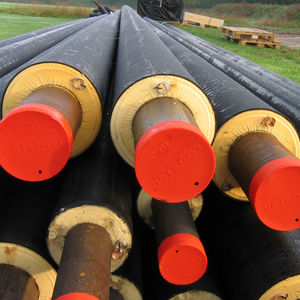Distribution
-
 The key challenge for district heating grids at medium and low temperatures is the integration of renewable sources. Most renewable sources are available at a limited temperature and hydraulic capacity. Therefore, the monitoring and control systems need to be further developed to optimise the use of the renewable sources, while taking into account the limitations of these sources. Such (peak shaving) control systems will use daily to seasonal predictions on the weather and building stock heating and cooling demand to optimise the operation. These kind of control systems will support the energy transition in the existing building stock (medium temperature grids) and in new developments (low temperature grids).
The key challenge for district heating grids at medium and low temperatures is the integration of renewable sources. Most renewable sources are available at a limited temperature and hydraulic capacity. Therefore, the monitoring and control systems need to be further developed to optimise the use of the renewable sources, while taking into account the limitations of these sources. Such (peak shaving) control systems will use daily to seasonal predictions on the weather and building stock heating and cooling demand to optimise the operation. These kind of control systems will support the energy transition in the existing building stock (medium temperature grids) and in new developments (low temperature grids).
Another challenge is the application of cheaper (plastic and composite) pipe materials for medium temperature district heating grids. Especially the long term behaviour of the structural properties of these materials needs more research.
-
Large quantities of high temperature heat (>100 C) become available in industrial processes, which can be re-used by other industries. Heat at these temperatures can be transferred efficiently with steam networks. Quite some knowledge has been developed in the past for a.o. nuclear power plants, but these steam distribution networks are longer and larger than most steam systems at a power plant. Therefore, the design of large steam networks must be taken to the next level of reliability and safety. Controlled start-up and shut down procedures must be supported by validated network modelling tools that take all relevant heat transfer and fluid dynamics processes properly into account. One of the poorly understood events is condensation induced waterhammer (CIW).
